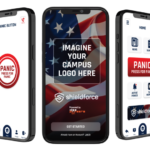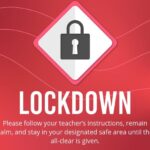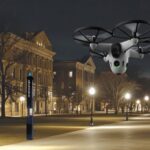On Oct. 24, 2022, a 19-year-old former student entered the Central Visual Performing Arts (CVPA) High School in St. Louis and used an AR-15 rifle to kill 15-year-old Alexzandria Bell and 61-year-old Jean Kuczka. He injured seven others before turning the gun on himself.
Two years later, the St. Louis Metropolitan Police Department (SLMPD) released a 456-page report on the incident. The report details the CVPA shooter’s manifesto, his mental health struggles, and his desire to target LGBTQ+ people in the shooting.
RELATED ARTICLE: School Shootings: Prevention, Response, Mitigation, and Recovery Resources
When reviewing a report of this nature, it is quite natural to view it through one or more historic lenses. One way is to review it through the eyes of law enforcement in how they report to the scene and attempt to interdict the threat. Others include reviewing the shooter’s mental health or missed opportunities to prevent the shooting. Focus many times turns to the weapon used or technology used by the site.
While a report is an account of the incident, a review is an analysis in a critical manner. This review will delve into the people at the scene, their response, and what may have helped them respond and recover better.
CVPA High School Shooting Police Report Review Findings
1) The most important part of preparing for any incident is conducting a risk assessment of a site. Under NFPA 3000, the American Standard for this type of event, a risk assessment shall be completed by an Authority Having Jurisdiction (AHJ). An AHJ may or may not be a government employee, however, they must be someone who understands the requirements of the standard and must verify that the requirements have been applied correctly. This does not appear to have been done from reading all the reports.
Examples of this is included on pages 377 (police officers do not have keys to enter rooms) and 396 (chained perimeter fence prevents officers from immediately entering the grounds) of the report. Part of the Risk Assessment is the determining Emergency Responder Accessibility. This would include items like lock box locations and keys for first responders to improve and speed up response.
2) The alert of an active shooter was given by the school which was helpful in saving lives. The alert was given in code words “Miles Davis is in the building.” While most students and staff knew what this meant, it is important to give plain language alerts that contain information and options. This is a tenet of the Incident Command System and plain language is recommended to allow for all people at a site to understand and take actions to protect themselves or others. Saying code words that may not be understood, heard correctly, or saying words like “lockdown,” “secure,” or “evacuate” without accompanying information can raise risk and not mitigate it.
RELATED ARTICLE: Active Incident Response: Why You Need to Conduct a Tabletop Exercise
Below are comments from teachers, staff, and students peppered throughout the report showing some of the issues with a coded announcement.
-
- Staff person forgot what “Miles Davis” meant and had to be reminded (p. 318)
- Staff person reported hearing “Wiemans in the building” (p. 322)
- Principal heard “Mr. Wyman is in the building” (p. 338)
- Student heard emergency announcement as “Tuba” or “Trumpet” (p. 354)
3) This incident includes two separate instances of people being killed behind locked doors (p.303). Suspect shoots through locked exterior door to gain access to the building, resulting in the death of a female student a brief time later (p. 323).
Student reports that their teacher responded to the classroom door in room 323 and secured it. Shooter then fired shots at glass windows in the door and entered the room (p. 334). Student witness in room 323 reports teacher locked door. They heard gunshots and then the shooter kicked the door open (p. 354). Student in room 323 reports hearing shots outside of the classroom door. She then saw smoke near the door handle and the shooter came into the room and shot the teacher (p. 406-407). Student in room 323 reports his teacher always kept the door locked. The door lock on their classroom door was shot and damaged from the hallway. The shooter then came into the room (p. 407). Another student states that the teacher locked the door to room 323. The students then laid on the floor in a pile. The shooter “shot down the door” and entered the classroom. Nowhere in the report is there any description of the classroom door before it was shot through or what the damage to it occurred. At least five students interviewed who were in the classroom reported that the door was locked and breached before their teacher was killed.
Part of a risk assessment is the identification of infrastructure to match the training given for a particular emergency. There is no reference to the EOP for the school, but from the report, indications are that single-option response was trained (also referred to as traditional lockdown). There are references to evacuation by individuals during the incident (reviewed in another section) and no reports indicating any type of “counter” or “fight” response in direct contact or of it being presented as an option. Since there are no indications that multi-optioned response was trained to the building population, the response was utilizing DBS (drive by shooting drills, which became traditional lockdown) for training which were used in a law enforcement SWAT response from the 1990s. These have not been recommended since 2008 on a national level. In January of 2024, NFPA 3000 removed this response as a national standard.
RELATED ARTICLE: SOCs, EOCs, Command Posts, and Dispatch: Which Ones Are Right for Your Organization?
4) At least two gunshots go through walls into another classroom (p. 339). This type of problem is also documented in the Uvalde school shooting report. In this incident, no other people were inadvertently shot. Because infrastructure does not match response at the building level in most schools, this type of incident can lead to casualties in surrounding rooms and areas. Part of the Emergency Operations Plan (EOP) for a school should have a medical annex and training for first aid for severe bleeding (p. 368). A makeshift tourniquet was applied to a student who was shot in the thigh. The student survived. Having proper medical supplies to treat severe bleeding should be as ubiquitous as having an AED at a school. Tourniquets should be kept in a ready location with AEDs and at least one is recommended to be kept in classroom first aid kits.
5) There are several heroic actions taken by security officers and law enforcement officers during the incident (p.370). One security officer gave her radio to the police so that communications could be improved. While this initially appears to be a minor action, it leaves the security officer vulnerable during the incident. This is an issue that is addressed in a risk assessment. Communications between responders is historically difficult. It should be decided before an incident where internal command posts will be set up, how effective communications will be made between the site and responders, and first responders should know how to locate and access cameras and public address systems inside of buildings. This should then be trained and evaluated in table tops and drills. It helps not only in responding to an incident but also assists in recovery by keeping building occupants informed during the incident and in the immediate aftermath to reduce anxiety and stress.
6) There are several instances where staff and students evacuated the building. It is not clear if this was a violation of the lockdown policy or was part of it. The actions seem to be spontaneous and not planned. This type of response should be trained to allow for better decision making during the emergency. This is like fire training in using information in deciding which way or means is used to evacuate based on the location of the threat.
RELATED ARTICLE: ‘Run Hide Fight’ and Responding to Active Shooters: What Does ‘Fight’ Mean at a School?
Students and staff evacuated onto a roof from classrooms and then moved to a position where officers were assisting them down (p. 343). Student and teacher evacuated dance room when shooter’s weapon malfunctioned, and he was trying to “fix” it (p. 350). Both ran past the shooter. Security officer comes face-to-face with the shooter (p. 371). He points the gun at her, but it appears the rifle malfunctions. She runs past him and secures herself in a restroom. Students in room 323, after the teacher is shot, pile up on each other (p. 407). Students identified as [blacked out in report] jump in front of the pile of kids. Shooter, instead of shooting the lockdown pile, leaves the room. Another student busts out a classroom window to allow students to jump out and get to safety.
7) A key part of a risk assessment for all-hazards response is the development of rally points and notification centers. Rally points are locations where people evacuate to initially if it is unsafe to stay on the grounds or in the building. Notification centers are part of the national standard for recovery after an event. Both should be developed in conjunction with all first responders to provide security and medical assistance. Notification centers are secured facilities in a centralized location that provide information about missing, injured, unaccounted for, or deceased persons. They also provide a site for reunification, a secondary casualty collection point, initial services for victims, victim’s loved ones and family members, initial mental health resources, police interview area, and should be prepared to operate up to 48 hours after a critical incident. These centers should have an assigned commander and be an integral part of unified command. This does not appear to have been prepared for as the reunification center became an open-air parking lot and students self-evacuated to multiple locations. Various students self-evacuated (p. 405-406). They went to homes, a Walgreens, and the Courtesy Diner. The grocery store was advised their parking lot was being used for re-unification (p. 413). Five hundred students had to be brought by staff from the Courtesy Diner to the grocery store.
As with any critical incident, a thorough review should be conducted of the entire incident by a neutral third party. The release of this police report provides the ability to review the incident and come away with actionable items to review with other schools and all emergency responders nationally to improve preparation, response, and recovery to active shooter and other hostile events.
Joseph Hendry is Principal Consultant at COSECURE, a risk solutions company and ancillary business of Philadelphia-based law firm Cozen O’Connor.
NOTE: The views expressed by guest bloggers and contributors are those of the authors and do not necessarily represent the views of, and should not be attributed to, Campus Safety.













